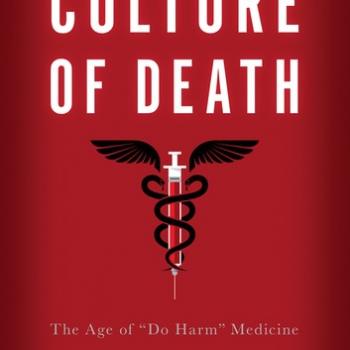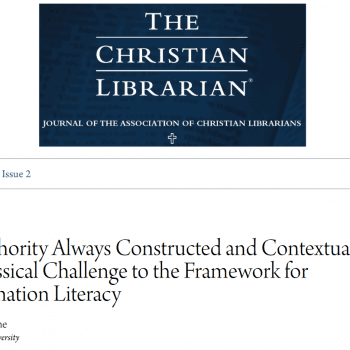Pastor Cooper did a podcast recently defending the word theosis against some who have been suggesting (well, more than suggesting) that it’s an inherently Eastern-Orthodox concept, and should be left alone by Lutherans. A commenter named Josh Greve posted some good questions in response to that podcast, and I’d like to take a crack at answering them, since I’m another Lutheran who thinks this is a crucial theological concept that should not be ceded to the East just because they talk about it more, and are more likely to use Greek terms.
Josh’s first question:
“I think what confuses some people is why you use the word Theosis. I get the technical reasons and etymologically it is accurate to use the word, but being that, for better or worse, the Eastern Orthodox have monopolized how this word is understood and used, does not make more sense to stick with Mystical Union and then, as a caveat, offer that this would be the Lutheran counterpart (though not equivalent) to Eastern Orthodox Theosis? … If Eastern Orthodoxy weren’t becoming popular among Lutherans, do you think it would have even occurred to you to use the term Theosis?”
The term is Patristic in origin; that’s where the EO’s themselves got it. So we’re not just saying that it’s sound technically or etymologically, but that it’s part of the Ancient heritage of the Church. And the EO’s are not the only ones who use it, either. Type “theosis” into Wikipedia, and you’ll get a disambiguation page:
Theosis may refer to:
• Divinization (Christian)
• Theosis (Eastern Orthodox theology), the process of coming into union with God
Now, can the term confuse people? Of course. It requires explanation. Its synonyms are no better, though:
- The Biblical word is “glorification,” but if you use that word, you have to deal with a lot of people assuming that they know what you mean, when they don’t. It doesn’t just mean that we’ll be shiny in heaven, or that we’ll be raised to a high position and given crowns, or that we’ll be made perfect (though that last one is the closest to getting it).
- The equivalent Latinate term is “divinization,” but that doesn’t exactly reduce the amount of explaining you have to do when you use it.
- The specifically Lutheran term that Pastor Cooper talked about in his podcast is “Mystical Union,” but that’s not actually a synonym. The Mystical Union is the means of theosis, which is specifically the change that occurs in us thereby.
So the word theosis communicates as well as the other options, and it has Patristic cred. I don’t use it exclusively, but I use it. And while conversations with EO’s (and with other Lutherans about EO theology) do cause me to use it more than I otherwise would, I’m not just borrowing the term from them. They use it a lot more than we do, yes, but they use “Orthodox” more than we do too, and the Roman Catholics use “Catholic” more than we do. These are not reasons to abandon the words. They are valuable words. If EO’s or RC’s have been monopolizing them, that’s all the more reason to push back, and carve out our rightful linguistic territory.
Josh’s second question:
“I wasn’t clear if you felt that when the ECF’s [Early Church Fathers] use the term Theosis in the East, the Lutheran take was actually more representative of what they had in their minds or just some of them or if it is impossible to say much of the time depending simply on how one read their words?”
Theosis in the Fathers is a Big-Picture doctrine. “God became man in order that man might become god.” It describes the whole plan of salvation in light of its final goal. At this scale (and properly understood) there is no conflict with Lutheran theology or with Scripture. “For those whom he foreknew he also predestined to be conformed to the image of his Son, in order that he might be the firstborn among many brothers. And those whom he predestined he also called, and those whom he called he also justified, and those whom he justified he also glorified” (Rom. 8:29-30). Glorification—re-creation in the image of Christ—is the end goal, the telos of the work of salvation. And as with any Big-Picture doctrine, there are also legitimate small-picture applications, one of which is to see sanctification as the temporal beginning of glorification. This is also perfectly Lutheran. The Formula of Concord, for instance, describes sanctification as “the incipient righteousness of the new obedience or of good works,” and says that it “is incomplete and impure in this life because of the flesh” (SD III.32), which implies that in the life to come it will be complete and pure—i.e. that sanctification will prove, once we are glorified, to have been in actuality the early and flesh-hindered stages of our glorification. That’s why Rom. 8:29-30 doesn’t mention sanctification as one of the steps in the plan of salvation, but skips straight from “justified” to “glorified.” Glorification includes sanctification, and sanctification in the broad sense includes glorification.
But the Lutheran and Eastern Orthodox accounts are about to diverge. Here’s the full sentence from which my last FC quotation came:
“For since this incipient righteousness or renewal in us is incomplete and impure in this life because of the flesh, the person cannot stand with and by it [on the ground of this righteousness] before God’s tribunal, but before God’s tribunal only the righteousness of the obedience, suffering, and death of Christ, which is imputed to faith, can stand, so that only for the sake of this obedience is the person (even after his renewal, when he has already many good works and lives the best [upright and blameless] life) pleasing and acceptable to God, and is received into adoption and heirship of eternal life.” (SD III.32)
That is, Lutherans acknowledge that theosis is the end goal of salvation, and that we get a foretaste of it now, through the Mystical Union, but the object of our faith here in this life is the finished work of Christ. Our righteousness in this life is “the righteousness of faith” (SD III), not the righteousness of sight, because here it does not appear that we are actually righteous. Thus we view our salvation as something that is already accomplished but entails future rewards (“for where there is forgiveness of sins there is also life and salvation” (SC VI)), rather than as a process that will be completed only in the future. So theosis is not, or should not be, just a code-word for the EO soteriological model. Rather it is an element that exists in EO and Lutheran soteriology, and is assigned a different place in the different models. We hold that we are justified by faith, and for that reason believe that we are also being, and will be, “transformed into the image of Christ.” EO’s do not call themselves justified until that process is completed. For us, theosis is sanctification and glorification. For them, it is justification too. That’s why they can call their teaching on salvation simply “theosis.” It’s the whole enchilada.*
So to get back to the question about the Church Fathers, their statements on theosis (like the Bible’s own statements on theosis) can be used to support either the Lutheran understanding or the Eastern Orthodox one, because as long as we’re just talking about sanctification/glorification as theosis, or about theosis/glorification as the end goal of salvation, there aren’t any differences. The difference arises entirely in how one integrates the doctrine of justification, and that’s an aspect of Patristic theology that was not at all systematic.
* I don’t mean to suggest that they have no teaching on forgiveness. It’s in the background, though, whereas in Lutheran theology we equate it with justification.











